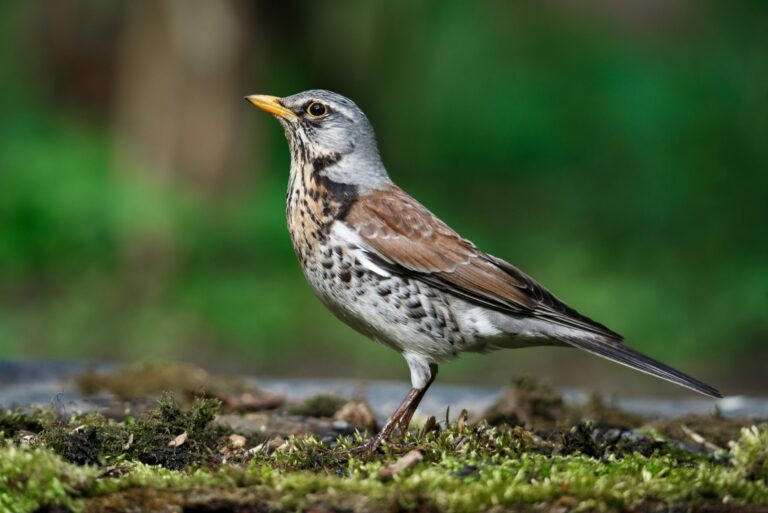Turdus pilaris

The plumage of the fieldfare is yellowish on the throat and breast, adorned with dark spots. The back is brownish, the head and neck are gray, the tail is almost black, and the belly and underwings are white. Turdus pilaris can reach a size of up to 25.5 cm. It prefers habitats such as open areas with trees, deciduous or mixed forests, parks, or gardens. The nests of fieldfares are built in trees, and they breed in colonies (Schaefer 2018). The female lays an average of 5-6 eggs (Slagsvold 1982). Fieldfares are migratory birds (Schaefer 2018), but they winter as short-distance migrants in southern and central Europe, making them visible year-round.
Diet: Turdus pilaris feeds on worms, snails, and insects. However, they also prefer plant-based food, especially berries, in the autumn and winter.
Conservation status: The fieldfare is classified as “not endangered” in both the IUCN Red List of Threatened Species and the Red List of Germany. Turdus pilaris is considered “strictly protected” according to the Birds Directive.
-
Schaefer, M (2018)Brohmer – Fauna von Deutschland. Ein Bestimmungsbuch unserer heimischen Tierwelt: Quelle & Meyer Verlag GmbH & Co.
-
Slagsvold, T (1982)Clutch Size, Nest Size, and Hatching Asynchrony in Birds: Experiments with the Fieldfare (Turdus Pilaris). In: Ecology 63 (5), S. 1389–1399.